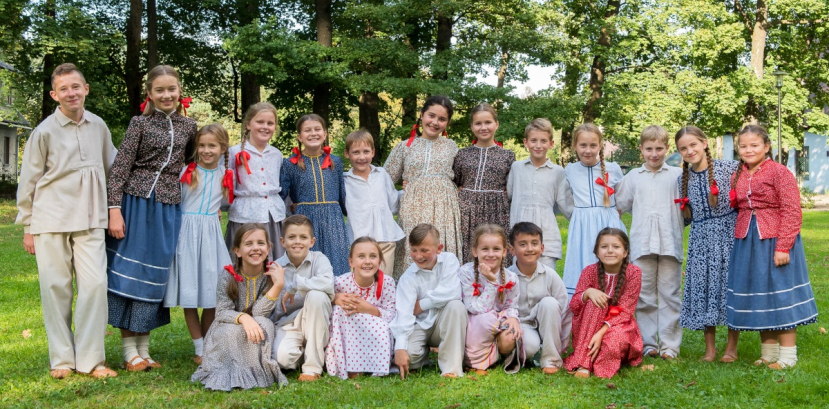The Szczyrzyc Lachs are centrally located among the Lach groups, which used to form in the sub-Carpathian region a belt of settlements parallel to the Beskids, where the culture – developed at the interface between the Carpathian Highlands and the Krakowiak Region – was of a distinctly mixed and transitional character. The Szczyrzyc Lachs inhabit a basin-like valley stretching to the edge of the Wiśnicz Foothills in the north, and the foothills of the northern slopes of the Island Beskids in the south. The centre of the region is marked by the valley of the Stradomka river, along with the village of Szczyrzyc, which was founded in the 13th century and which economically thrived as the local seat of the Cistercians. Ethnographically, in the north, the Szczyrzyc Lachs border on the Krakowiaks; in the east and southeast – the Limanowa Lachs (and the Lachs of Dobra), in the south – the Zagórze Highlanders; in the west – the Lachs of Myślenice (usually included in the Western Krakowiaks).
The region is represented by the PNIOKI ensemble, which was established at John Paul II Primary School in Sadek-Kostrza in 2005. The school straddles the border between two places: Kostrza and Sadek, and hence its name. The name PNIOKI (‘tree stumps’) designates native villagers who know and cultivate the traditions and customs of their own region. The ensemble’s repertoire includes games, counting rhymes, singing dances, rites and local dialect. In their programmes the members use the local costumes that they have received from the oldest villagers. The bodices worn by some of the bigger girls in the ensemble are particularly remarkable, because they are more than one hundred years old.
At the Festival PNIOKI is going to present a programme entitled Before the Feast Day of Our Lady of Herbs (Assumption Day). The children and the mother are picking herbs, which the next day (the Day of Our Lady of Herbs) are to be consecrated at church. More children come and, following a short conversation about the therapeutic properties of the gathered plants, they all begin playing games of łabodzie, niedźwiedź and koło młyńskie. The children’s spontaneous play is interrupted by some teenagers and a musical band coming back from the manor estate, where the harvest festival has been held. A dancing party ensues, which is after some time brought to an end by the mother, who is calling the children for evening chores.
Halina Gocal is the ensemble leader, Maria Wójtowicz is the dance instructor, and Mateusz Frys heads the musical band, which will be playing violins, a double bass, a clarinet and a trumpet.
The region is represented by the PNIOKI ensemble, which was established at John Paul II Primary School in Sadek-Kostrza in 2005. The school straddles the border between two places: Kostrza and Sadek, and hence its name. The name PNIOKI (‘tree stumps’) designates native villagers who know and cultivate the traditions and customs of their own region. The ensemble’s repertoire includes games, counting rhymes, singing dances, rites and local dialect. In their programmes the members use the local costumes that they have received from the oldest villagers. The bodices worn by some of the bigger girls in the ensemble are particularly remarkable, because they are more than one hundred years old.
At the Festival PNIOKI is going to present a programme entitled Before the Feast Day of Our Lady of Herbs (Assumption Day). The children and the mother are picking herbs, which the next day (the Day of Our Lady of Herbs) are to be consecrated at church. More children come and, following a short conversation about the therapeutic properties of the gathered plants, they all begin playing games of łabodzie, niedźwiedź and koło młyńskie. The children’s spontaneous play is interrupted by some teenagers and a musical band coming back from the manor estate, where the harvest festival has been held. A dancing party ensues, which is after some time brought to an end by the mother, who is calling the children for evening chores.
Halina Gocal is the ensemble leader, Maria Wójtowicz is the dance instructor, and Mateusz Frys heads the musical band, which will be playing violins, a double bass, a clarinet and a trumpet.

